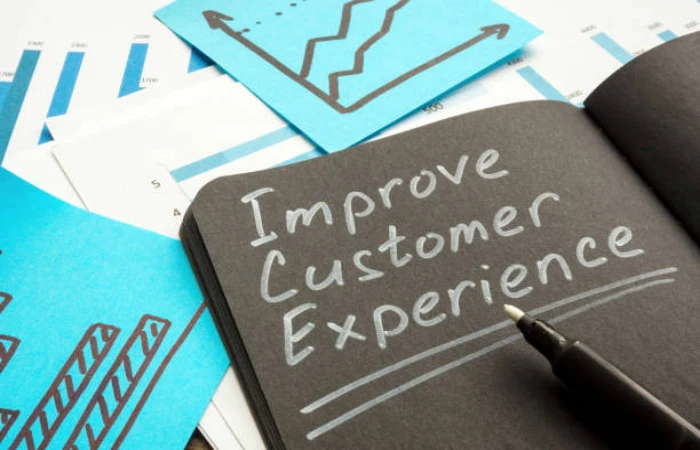Time is a precious commodity, and customers expect efficiency in every aspect of their business interactions. Whether it’s waiting in line at a retail store, a healthcare facility, or a government office, nobody enjoys long and frustrating queues. This is where queuing software comes into play, revolutionizing how businesses manage customer flow and enhancing overall satisfaction. We’ll explore five ways queuing software boosts customer satisfaction and transforms the customer experience.
-
Table of Contents
Reduced Wait Times
One of the most significant advantages of queuing software is its ability to slash wait times dramatically. Traditional queue management methods often lead to lengthy and frustrating waits, causing customers to become impatient and dissatisfied. Queuing software streamlines the process by allowing customers to check in digitally, receive real-time updates on their queue status, and get accurate estimates of their wait times. This transparency and efficiency make the waiting experience more bearable, leading to happier customers.
-
Improved Customer Experience

Queuing software goes beyond simply managing queues and enhances the overall customer experience. With features like appointment scheduling, customers can choose convenient times for their visits, reducing the chances of long queues forming. Additionally, queuing software can send automated notifications and reminders to customers, ensuring they are prepared for their appointments and arrive at the right time. These proactive measures demonstrate a commitment to customer convenience and make a positive impression.
-
Personalized Service
Queuing software allows businesses to collect valuable customer data, such as their preferences, past interactions, and service history. With this information at their fingertips, businesses can offer more personalized service. For example, a retail store can use queuing data to recommend products based on a customer’s previous purchases. In healthcare, medical professionals can access a patient’s history and preferences before an appointment, leading to a more personalized and effective consultation.
-
Optimized Staff Allocation
Efficiently managing staff resources is crucial for reducing wait times and improving customer satisfaction. Queuing software provides real-time data on customer flow, allowing businesses to allocate staff where needed most. This dynamic staffing approach ensures enough service providers are available during peak times, preventing bottlenecks and reducing wait times. As a result, customers experience faster service and leave a positive impression of the business.
-
Feedback and Continuous Improvement
Queuing software enables businesses to gather valuable customer feedback through surveys and ratings. This feedback is invaluable for identifying areas of improvement in the queuing process and overall customer experience. By listening to customer feedback and making necessary adjustments, businesses can continually enhance their queuing solutions and provide an even better experience. Customers appreciate when their feedback is taken seriously; this commitment to improvement fosters trust and loyalty.
Enhanced Safety and Health Measures

The role of queuing software in promoting safety and health has become increasingly significant. Businesses must prioritize the well-being of their customers, and queuing software offers valuable tools to achieve this goal.
Social Distancing Made Easy
Queuing software can help businesses enforce social distancing guidelines effortlessly. The ability to control the flow of customers and designate safe distances within queues ensures that individuals are adequately spaced apart. This reduces the risk of disease transmission and gives customers peace of mind, knowing that their safety is a top priority.
Contactless Check-Ins and Appointments
When minimizing physical contact is crucial, queuing software facilitates contactless check-ins and appointments. Customers can utilize mobile apps or self-service kiosks to check in without physical paperwork or interactions with staff. This not only streamlines the process but also reduces the risk of cross-contamination.
Real-time Updates on Safety Protocols
Queuing software can provide real-time updates on safety protocols and guidelines to customers. Through digital signage and notifications, customers can stay informed about mask requirements, hand sanitization stations, and other safety measures in place. This transparency builds trust and reassures customers that their health is a top priority.
Efficient Monitoring of Capacity Limits
Many businesses have been mandated to operate with reduced capacity limits to ensure social distancing. Queuing software can help monitor and enforce these limits effectively. The software can prevent overcrowding and maintain a safe environment by tracking the number of customers inside the premises in real-time.
Data for Contact Tracing
Queuing software can assist with contact tracing efforts in the unfortunate event of a health-related incident. It can provide essential data about the customers present during a specific timeframe, making it easier to notify individuals who may have been exposed to a health risk. This proactive approach demonstrates a commitment to customer safety.
Conclusion
Queuing software is a powerful tool for enhancing customer satisfaction in various industries. Businesses can transform how they manage queues and interactions by reducing wait times, improving the overall customer experience, offering personalized service, optimizing staff allocation, and embracing feedback for continuous improvement. With its expertise in queuing solutions, Nemo-Q is a reliable partner for businesses looking to boost customer satisfaction. To learn more and take the first step toward a more efficient and satisfying customer experience, visit Nemo-Q. With queuing software, businesses can turn frustrating queues into opportunities to delight customers and build lasting relationships.

